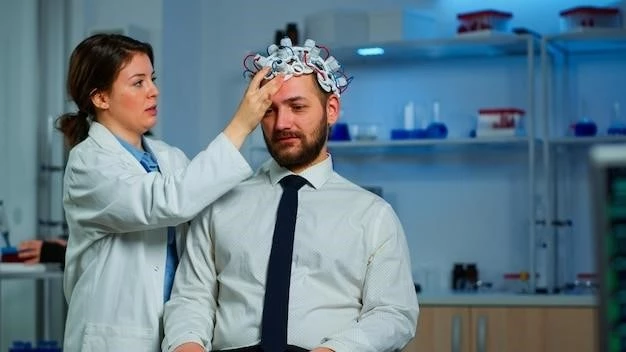Overview of Craniosynostosis
Discover the comprehensive overview of craniosynostosis, including causes, symptoms,
diagnosis, and treatment. Learn about genetic factors, mental retardation, cleft lip and palate,
as well as the latest research advancements in managing craniosynostosis.
Definition and Brief Description
Craniosynostosis is a condition characterized by the premature fusion of one or more cranial sutures in an infant’s skull. This fusion can restrict normal brain growth and skull development, leading to abnormal head shape. Early diagnosis and appropriate treatment are crucial to prevent complications and ensure optimal outcomes.
Causes of Craniosynostosis
Explore the genetic causes and environmental factors that contribute to craniosynostosis.
Genetic Causes
Craniosynostosis can be caused by genetic mutations affecting the development of cranial sutures. Syndromic craniosynostosis, associated with genetic conditions like Apert syndrome or Crouzon syndrome, highlights the role of genetics in this condition. Understanding the genetic basis is crucial for effective management and treatment.
Environmental Factors
While genetic causes play a significant role in craniosynostosis, environmental factors such as maternal smoking, advanced parental age, and certain medications can also influence the development of this condition. Understanding the interplay between genetics and the environment is essential for a comprehensive approach to managing craniosynostosis.
Symptoms of Craniosynostosis
Learn about the physical symptoms and developmental delays associated with craniosynostosis.
Physical Symptoms
Physical symptoms of craniosynostosis may include an abnormal head shape, raised intracranial pressure, visible skull ridges, and potential eye movement issues. Identifying these physical signs early is vital for prompt diagnosis and appropriate intervention to support optimal cranial and neurological development in affected individuals.
Developmental Delays
Developmental delays in craniosynostosis can impact speech, motor skills, and cognitive growth. Early recognition and intervention are crucial to provide appropriate support and therapies to address these delays effectively. Understanding the developmental challenges associated with craniosynostosis is essential for comprehensive care and improved outcomes.
Diagnosis and Treatment of Craniosynostosis
Explore the diagnostic procedures and treatment options for craniosynostosis to ensure optimal outcomes.
Diagnostic Procedures
Diagnostic evaluation of craniosynostosis may involve physical exams, imaging studies like CT scans or MRIs, and genetic testing to confirm the diagnosis. Early and accurate diagnosis is crucial for developing a tailored treatment plan and ensuring the best possible outcomes for individuals with craniosynostosis.
Treatment Options
Treatment for craniosynostosis may involve surgical interventions such as cranial vault remodeling or endoscopic strip craniectomy. The goal is to release fused sutures, reshape the skull, and allow for proper brain growth. Early intervention and coordinated multidisciplinary care are essential in achieving the best possible outcomes for individuals with craniosynostosis.
Understanding Mental Retardation
Explore the definition and causes of mental retardation, a condition that may be associated
with craniosynostosis in some cases.
Definition and Causes
Mental retardation, now referred to as intellectual disability, is characterized by limitations in intellectual functioning and adaptive behaviors. Causes may include genetic conditions, brain injuries, or environmental factors. Understanding the multifaceted causes of intellectual disability is crucial for providing appropriate support and interventions;

Cleft Lip and Palate⁚ Causes and Treatments
Explore the causes of cleft lip and palate and the available treatment approaches.
Causes of Cleft Lip and Palate
Cleft lip and palate can result from genetic factors, environmental influences during pregnancy, or a combination of both. Factors like maternal diet, exposure to toxins, and certain medications may contribute to the development of these conditions. Understanding the various causes is essential for effective prevention and management strategies.
Treatment Approaches
Treatment strategies for cleft lip and palate often involve surgical correction, speech therapy, and dental interventions. Multidisciplinary care teams work together to address the functional and aesthetic aspects of these conditions to improve speech, feeding, and overall quality of life for affected individuals. Early intervention and ongoing support are key in achieving successful outcomes.
Genetic Factors in Craniosynostosis
Learn about the role of genetics in the development of craniosynostosis.
Role of Genetics
Genetic factors play a significant role in craniosynostosis, with mutations impacting cranial suture development. Understanding the genetic underpinnings is crucial for personalized treatment plans and genetic counseling. Advances in genetic research are enhancing our knowledge of the complex genetic factors contributing to craniosynostosis.
Research Advances in Craniosynostosis Management
Stay informed about recent studies and breakthroughs in the management of craniosynostosis.
Recent Studies and Breakthroughs
Recent research in craniosynostosis management has focused on improved surgical techniques, minimally invasive approaches, and personalized treatment plans. Breakthroughs in genetic research have enhanced our understanding of the condition, leading to more targeted therapies. Stay updated on the latest advancements shaping the future of craniosynostosis care.
